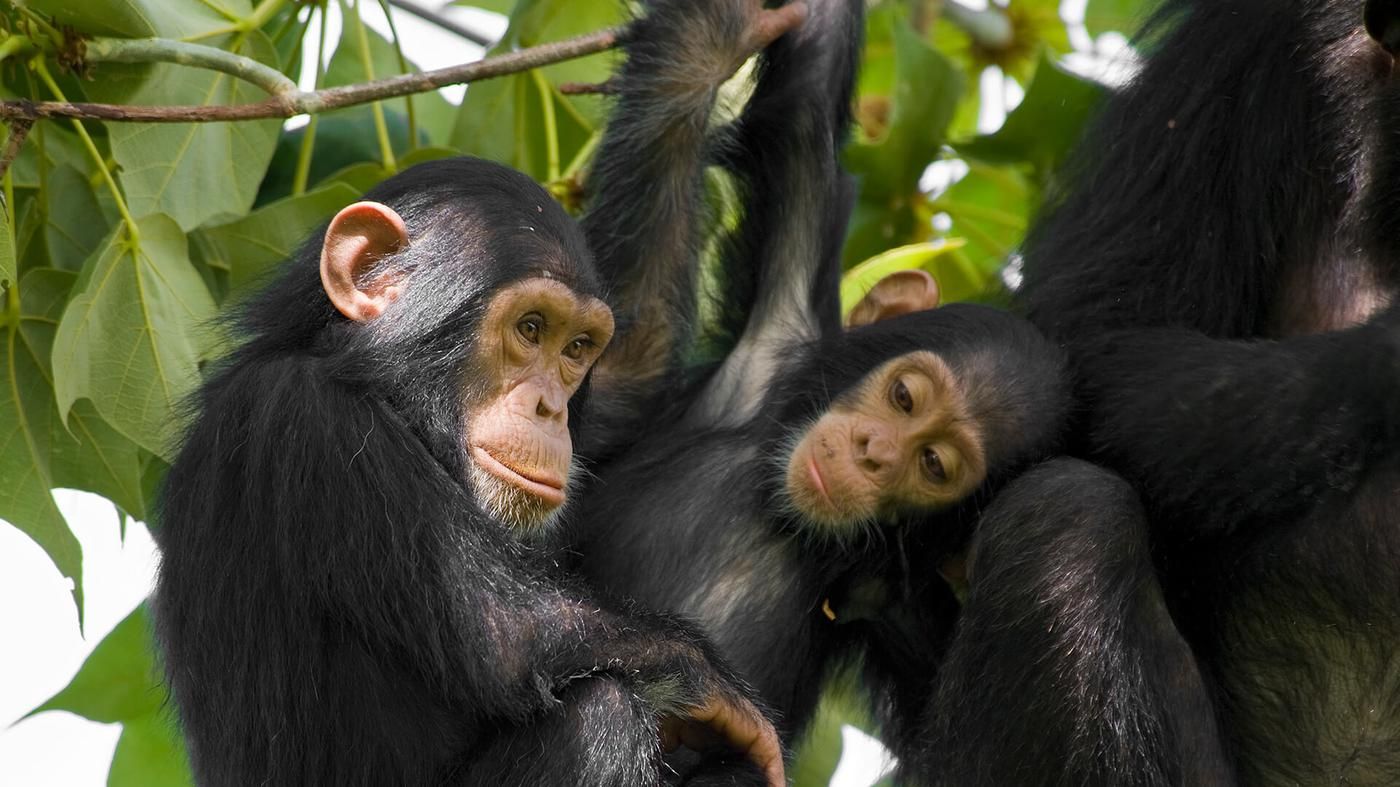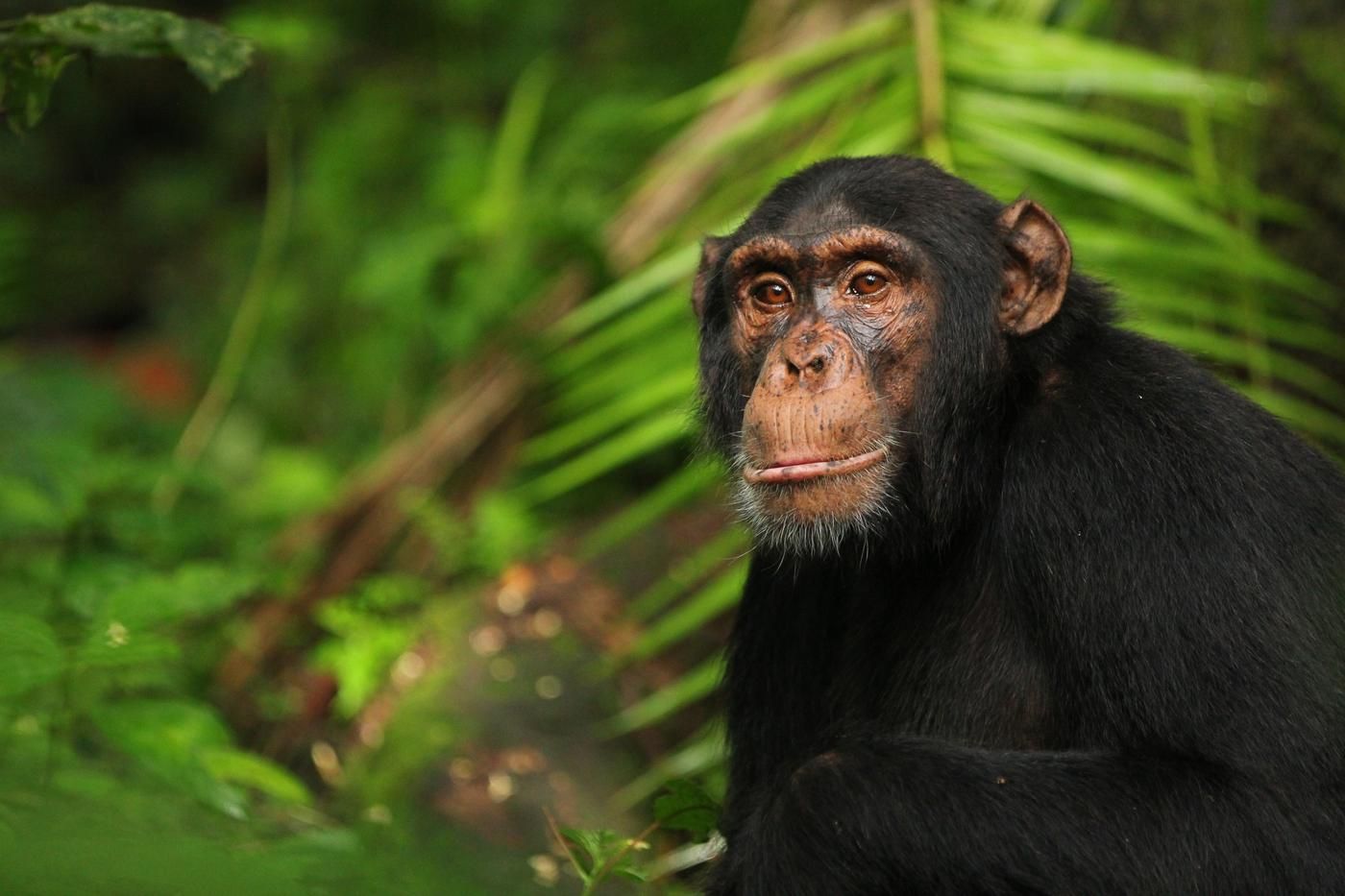As we all know we share a common ancestor with the chimpanzees. Chimpanzees are one of the highest developed great apes, just below humans. In fact, chimpanzees have more in common with humans than with monkeys and orangutans.
When I started my minor Evolutionary psychobiology, one of the first things said was this quote: “The puzzle is really why great apes are not extinct. How do they survive in the face of monkey competition?” – Byrne, 2016. Chimpanzees have a large body size and a costly form of long distance locomotion (they walk on their knuckles) compared to the quadrupedal locomotion of monkeys. This makes it very difficult for them to swing through the trees and to avoid predators on the ground. They also lack physiological dietary adaptations to deal with chemically defended foods (mature leaves, gum and seeds). They rely on energy-rich food (young leaves and ripe fruit) and foods that are hidden throughout the jungle. So why aren’t the great apes outcompeted by the monkeys, who have an easier locomotion and more chance of finding food? At least 40 species of great apes were identified and got extinct. Many great apes fossils were found in the Miocene (23-5 million years ago). Were the few great apes that survived particularly clever?
Chimpanzees (and primates in general) have relatively large brains compared to other animals. Because of these large brains, they were able to develop cognition and have a representational understanding of the world unlike monkeys (in normal language: they think). Their intelligence developed due to the interaction of social and ecological factors. They learn about which food is edible, where it is and how it should be processed from other types of food. They take their foraging activities into account, for example: primates decide whether to follow another member of the group to food or to reduce competition by avoiding other individuals. Chimpanzees ‘remember’ the location of food and the amount, this is called the what-where memory.
As I mentioned before, moving through the forests is a problem for the chimps. Due to their large size, they have a high risk of injury. That’s why chimps need to be particularly good in having knowledge about their own body to be able to move in the right way. They evolved self-conception: the ability to simulate the movement before doing it. This also raises the question if the chimps are capable of planning and have insight in how to solve certain problems.
Also, chimpanzees have developed skilled feeding techniques to gather food from sources that are nutritious but difficult to reach. Just like humans, chimpanzees create and use tools. For example, termites are one of the favourite foods of chimpanzees. To reach the termites the apes use twigs. They strip the leaves off of it and stick the twig into one of the holes in the termite nest, leave it there for a few seconds and slowly pull it out to find the twig full of termites. This ability enables them to access food that other animals could not.
So to answer the first question, the few great apes that survived like the chimpanzee, were indeed more clever. Due to the evolution of bigger brains (relative to body size), the chimpanzees are able to have an outstanding knowledge of their environment and of themselves. This knowledge enables them to move around and forage in a convenient way and prevents too much competition with monkeys.
Recommendation: watch the Disneynature movie ‘Chimpanzee’. It is a beautiful story about a three-month old chimpanzee called Oscar, who lives in the African rainforest.







